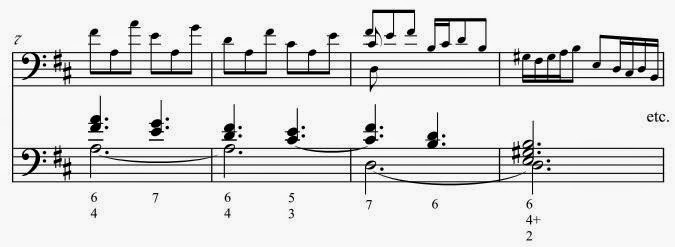6th Suite in D major BWV 1012
Gigue
Bar 8, 4th note: Most editions show e according to Anna Magdalena Bach (AMB) (and Sources C and D):
But it is probably a mistake because the 7th chord of next bar requires c-sharp as a preparation of suspension. Only Bach Gesellschaft Ausgabe (BGA/1879) take c-sharp according to Kellner:
Kellner:
I show you the harmony reduction for easy understanding:
A similar example from the Allemande of the 6th Suite (bar 6, 2nd and 3rd beats):
Bar 18, 2nd half: Some editions take e, c-charp, e in 8th notes according to AMB (and Sources C and D). But I think it is AMB's error. I can't prove it but I can't find any reason to modify from charming figuration same as bar 2 into three 8th notes. They are too poor, dull, unnatural. So I took Kellner's figuration.
AMB (2nd bar of figure below):
Kellner:









































